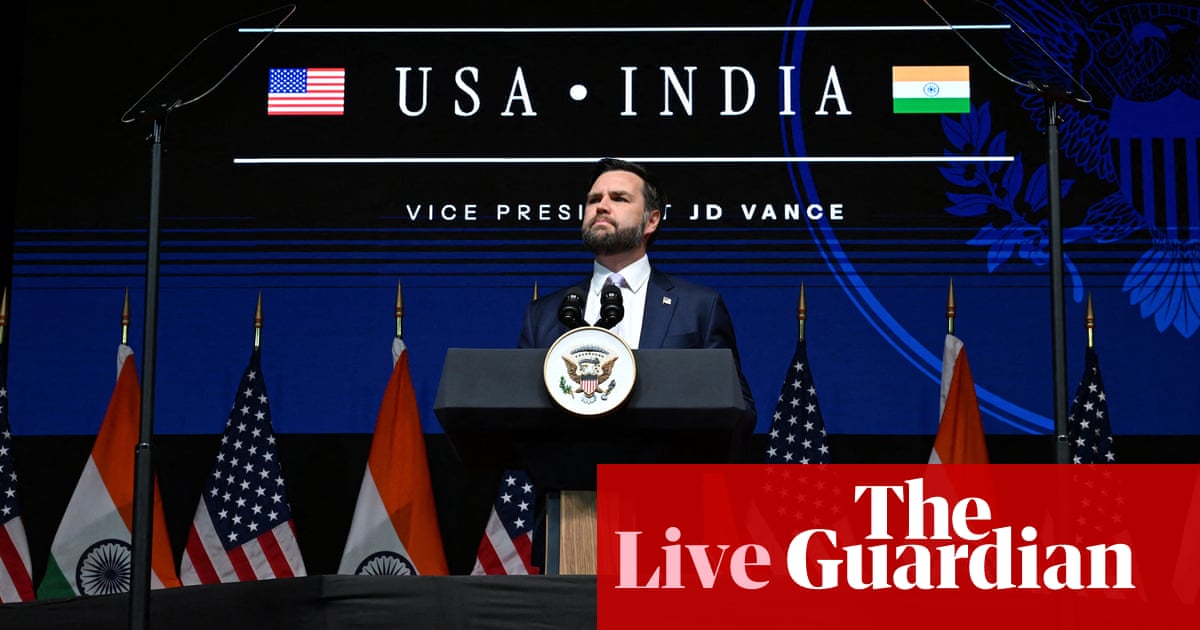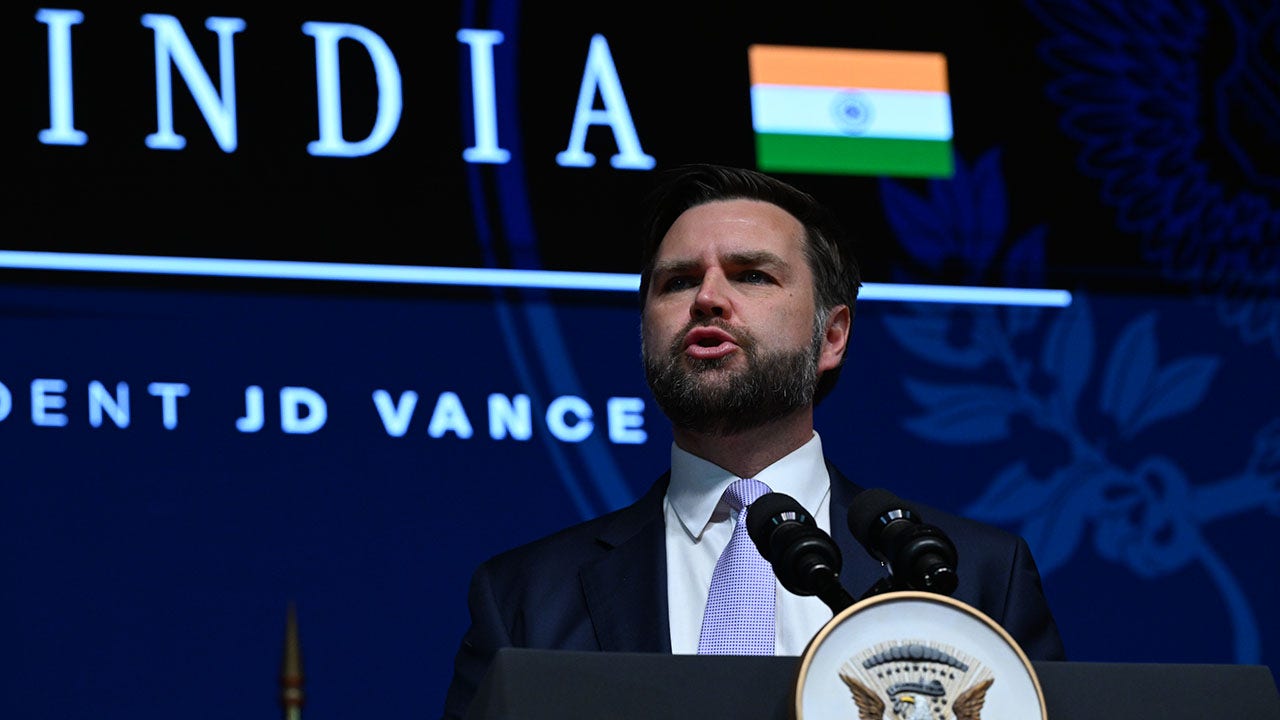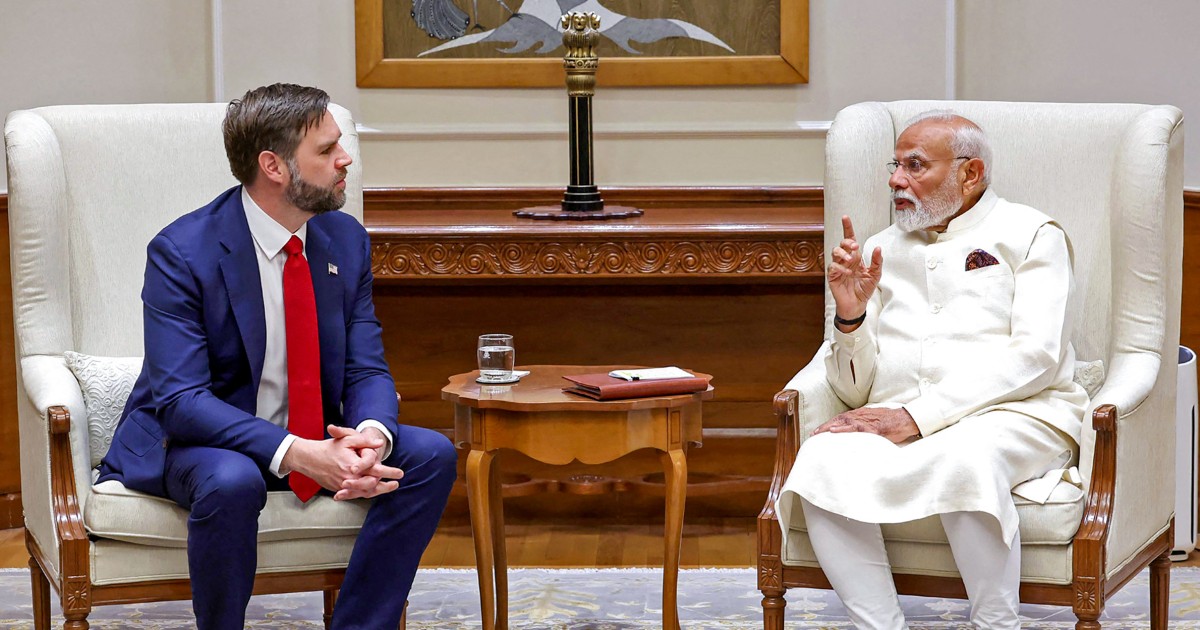U.S. Vice President JD Vance Advocates for Enhanced Trade and Defense Ties with India
During his visit to India, VP JD Vance urged stronger trade and defense partnerships in discussions with Prime Minister Modi, aiming for a $500 billion trade goal by 2030.
Subscribe to unlock this story
We really don't like cutting you off, but you've reached your monthly limit. At just $5/month, subscriptions are how we keep this project going. Start your free 7-day trial today!
Get StartedHave an account? Sign in
Overview
U.S. Vice President JD Vance, on a visit to India, highlighted the need for strengthened trade and defense ties, targeting over $500 billion in bilateral trade by 2030. He confirmed progress in trade negotiations with Prime Minister Modi, emphasizing fairness and shared interests. Vance's remarks aim to calm concerns about tariffs and underlined mutual benefits in collaboration against influences like China. Both nations aspire to finalize an agreement that enhances economic and diplomatic relations, reflecting a commitment to building a prosperous future together.
Report issue

Read both sides in 5 minutes each day
Analysis
- Vance highlighted the importance of strengthening US-India trade relations that could lead to significant economic and diplomatic benefits, targeting a goal of $500 billion in trade by 2030.
- The finalization of terms for trade negotiations signals important progress in building partnerships based on fairness and shared goals, addressing previous concerns over tariff policies.
- A stronger US-India alliance is seen as crucial in countering the influence of China in the Indo-Pacific, emphasizing the potential for peace and prosperity in the 21st century.
Articles (5)
Center (2)
FAQ
The main objectives of JD Vance's visit include strengthening trade and defense ties between the U.S. and India, progressing towards a bilateral trade agreement, and aiming to boost bilateral trade to over $500 billion by 2030.
JD Vance and Prime Minister Narendra Modi welcomed progress in trade deal talks, emphasizing fairness and shared interests as they work towards finalizing an economic agreement.
The U.S. views strengthened trade and defense ties with India as vital to counter influences like China, reflecting a commitment to mutual benefits and a prosperous future together amid regional competition.
JD Vance's itinerary includes meetings with Prime Minister Modi in New Delhi, visits to Jaipur where he toured the Amer Fort, and Agra where he plans to visit the Taj Mahal, followed by his departure on April 24.
The visit reflects the strength of the India-U.S. Comprehensive Strategic Global Partnership, expected to boost bilateral ties substantially through enhanced economic and defense cooperation.
History
- This story does not have any previous versions.



